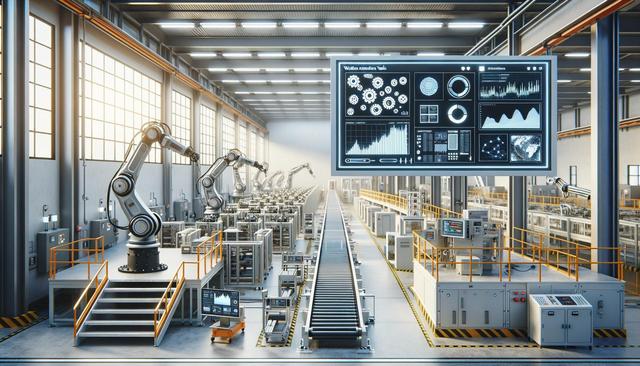Understanding Workflow Automation in Industrial Settings
Workflow automation in industrial processes refers to the use of software and digital tools to streamline tasks that were traditionally performed manually. These tools can manage repetitive operations, monitor machinery, and trigger actions based on predefined rules, significantly reducing the need for human intervention. In highly regulated and complex environments like manufacturing, logistics, and energy production, automation tools offer a structured approach to increase consistency and minimize errors. By automating workflows, companies can gain better visibility into their operations, allowing for more informed decision-making and faster response times.
In practical terms, implementing workflow automation may involve connecting various systems—such as ERP platforms, sensors, and robotics—to ensure seamless data exchange and task execution. This integration allows for real-time tracking of production lines, automated inventory management, and predictive maintenance. As a result, businesses can not only reduce operational delays but also enhance product quality and compliance with industry standards.
Key Benefits of Workflow Automation Tools
One of the most significant advantages of workflow automation tools is their ability to optimize resource allocation. By automating routine and time-consuming tasks, employees can focus on more strategic and creative aspects of their roles, leading to improved job satisfaction and productivity. Additionally, automation reduces the likelihood of human error, especially in data-heavy processes, which can lead to cost savings and better risk management.
Other notable benefits include:
- Faster production cycles and reduced downtime
- Improved accuracy in data logging and reporting
- Enhanced compliance with safety and regulatory requirements
- Greater scalability of operations without proportional increases in labor
These benefits make workflow automation tools a strategic investment for companies aiming to remain competitive in rapidly evolving markets.
Applications Across Different Industrial Sectors
Workflow automation tools are being adopted across a wide range of industrial sectors, each with its own unique requirements and challenges. In the manufacturing sector, these tools are used to manage production schedules, track machine performance, and ensure quality control. In logistics and supply chain management, automation helps coordinate shipments, monitor inventory levels, and optimize delivery routes.
In the energy sector, automated workflows facilitate the monitoring and control of complex systems such as power grids and oil drilling operations. By using sensors and real-time analytics, companies can predict equipment failures before they occur and take preventative action. Even in industries like pharmaceuticals, where precision and compliance are critical, automation tools help maintain detailed audit trails and ensure adherence to manufacturing protocols.
Challenges and Considerations When Implementing Automation
While the benefits of workflow automation are numerous, there are also challenges that companies must address during implementation. One major consideration is the upfront cost of purchasing and integrating automation tools. Although these costs can be offset by long-term gains in efficiency and productivity, they may pose a barrier for small to mid-sized enterprises.
Other challenges include:
- Employee resistance to change due to fear of job displacement
- The need for training and upskilling staff to work alongside automated systems
- Data security concerns, particularly when integrating cloud-based tools
- Ensuring system interoperability across legacy and modern platforms
Addressing these challenges requires a well-thought-out change management strategy, clear communication with stakeholders, and ongoing support to ensure a smooth transition to automated workflows.
Future Trends in Industrial Workflow Automation
As technology continues to evolve, the future of workflow automation in industrial processes looks increasingly promising. Artificial Intelligence (AI) and Machine Learning (ML) are being integrated with automation tools to enable more adaptive and intelligent systems. These technologies can analyze patterns, learn from outcomes, and make real-time adjustments, further improving operational efficiency.
Another emerging trend is the use of digital twins—virtual replicas of physical systems—to simulate and optimize workflows before implementing changes in the real world. Additionally, the rise of the Industrial Internet of Things (IIoT) allows for more comprehensive data collection and analysis, enhancing the effectiveness of automation tools.
With these advancements, industries can expect even greater levels of optimization, from predictive analytics and autonomous operations to enhanced human-machine collaboration. As these tools become more accessible, even smaller companies will be able to leverage them to improve their processes and remain competitive in a global marketplace.
Conclusion: Embracing Automation for Sustainable Growth
Workflow automation tools offer a practical and impactful way for industries to enhance operational efficiency, reduce costs, and maintain high standards of quality. By embracing these technologies, companies can not only meet current market demands but also build a foundation for sustainable growth and innovation. Successful implementation involves careful planning, employee engagement, and a commitment to continuous improvement. As automation continues to evolve, staying informed and adaptable will be key to unlocking its full potential in industrial environments.




Leave a Reply